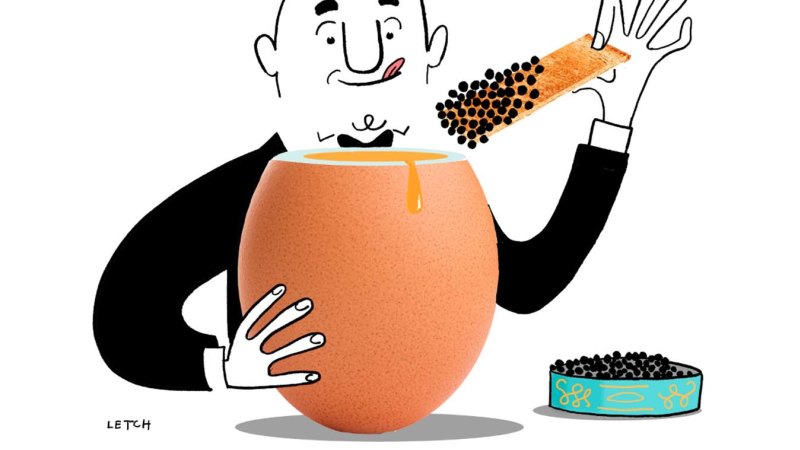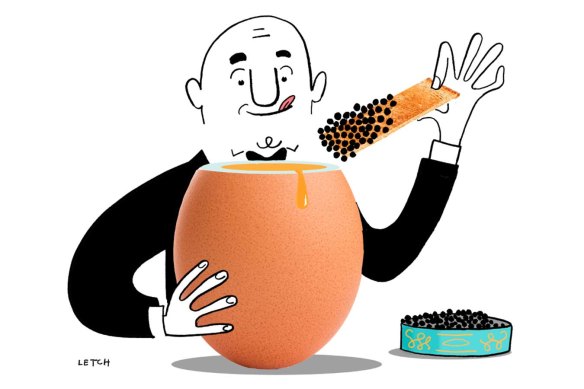
Why retirees can spend more of their super than they think
August 11, 2023Save articles for later
Add articles to your saved list and come back to them any time.
Retirees in 2023 are grappling with a peculiar challenge that needs solving: once in retirement, most people fear running out of money so much they only draw the minimum amount required from their super funds.
I suspect that’s because we don’t really understand that our super funds come into their own in the retirement phase – usually generating better returns than in accumulation – giving us the opportunity to consider drawing more retirement income than the minimum.
Don’t be afraid to dip into your super a bit more once you retire.Credit: Simon Letch
Retirement phase (formerly known as pension phase) is when superannuation performance is most important, as it is the time of life when your fund makes the largest amount of money through compound investing. In fact, for most people, between 50 and 60 per cent of your total funds in superannuation are generated during your retirement years.
So today we’re delving into the performance of retirement phase funds this year, and comparing the returns funds are making with the superannuation drawdown limits, and why you might consider drawing more than the minimum from your super fund in retirement.
First, let’s put things in perspective. According to the 10/30/60 rule, during our working years, we contribute 10 per cent of our earnings to our super fund. Over time, 30 per cent of our retirement balance stems from investment returns made through compound interest before retirement, while up to 60 per cent comes from investment returns after retirement, powered by the magic of compounding.
It’s quite baffling to think about how little most people understand about this concept before they retire and how anxious the mysterious nature of this industry makes us feel. Many people opt to draw down the minimum from their super of 4 per cent before the age of 65 or 5 per cent from 65-74.
But if their funds are performing at an average of 7-10 per cent returns over a 10-year period – as you can see the top 10 growth funds are – they may well be able to consider drawing down more each year and living less frugally. Because if you are only drawing down 4 to 5 per cent, your super balance is likely still increasing, something most people do not factor into their retirement plan.
Just this week, research provider Chant West released into the public domain the one- and 10-year performance data for the top 10 list of pension funds from their pension survey, data that is not widely or freely available.
This data allows us to see which funds are delivering good returns in the short term, and solid returns over a long period. Unlike in accumulation funds, the data on fees is not uniformly presented by each fund, so all I can tell you is that for each fund listed, these performance metrics are net of investment fees, but not administration fees.
And administration fees on the top 10 funds over 10 years presented here, range from 0.1 per cent to 0.35 per cent on a balance of $250,000, the average balance for Australian super funds at retirement today.
People may not be aware that super funds in the retirement phase usually perform better than super funds in the accumulation phase.
When you build your retirement budget and set your retirement date, you usually do so in the belief that you have saved enough money to afford your retirement years ahead, and plan to live off a combination of the pension and some income generated from capital held in your super.
Most people, then, when presented with their account-based pension form from their super fund tick the box that requests the “minimum drawdown” amount in the early years, afraid of things like underperforming markets, or simply running out of money later in life.
And nobody stops and quietly asks them if they’ve contemplated drawing more, to improve their lifestyle in retirement and pointed out what they are earning (or could earn in the top funds) is higher than their drawdown. Instead, people live fearing the unknown, and the fear is now that people will die with plenty of money in their super funds having lived too frugally in retirement.
Retirement phase super funds are not publicly benchmarked, and the industry does not talk much about their performance. So people may not be aware that super funds in the retirement phase usually perform better than super funds in the accumulation phase.
I took a deeper dive into two of Australia’s largest funds to compare accumulation and pension fund returns. REST’s Diversified Accumulation fund has delivered a 7.58 per cent return in accumulation and 8.31 per cent in pension phase over 10 years.
Australian Super’s Balanced Fund had a 10-year return of 8.6 per cent in accumulation and 9.48 per cent in pension phase. For both, the retirement phase products are outperforming. And I want you to understand why.
First, once you enter the retirement phase, all the income your fund generates is tax-free, allowing for a higher return, and if reinvested, a more rapid compounding effect. Second, depending on your situation, your franking credits are likely to be higher than the tax payable by the fund, again allowing for increased returns each year.
And finally, unless your balance is above the transfer balance cap and still held partially in accumulation you will likely have no CGT liability on assets sold in retirement phase.
So the thought I leave you with today is, are you drawing down enough in pension phase to enjoy your retirement? Or do you need to dive deeper to understand your super fund’s performance in retirement and perhaps consult an adviser to work out whether you could draw down more?
Bec Wilson is author of How to Have an Epic Retirement, which is now available online and in all major booksellers. She writes a weekly email newsletter for pre- and post-retirees at epicretirement.net.
- Advice given in this article is general in nature and not intended to influence readers’ decisions about investing or financial products. They should always seek their own professional advice that takes into account their own personal circumstances before making any financial decisions.
For expert tips on how to save, invest and make the most of your money, delivered to your inbox every Sunday, sign up for our Real Money newsletter here.
Most Viewed in Money
From our partners
Source: Read Full Article



